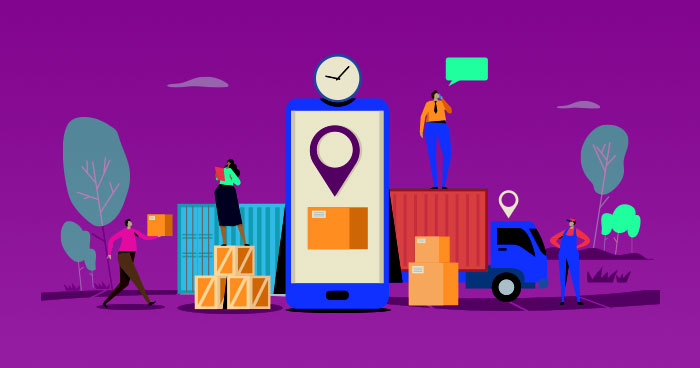The shipping industry in India has grown as a result of the unanticipated rise of e-commerce in recent years. To boost their fulfilment capacity, courier companies are investing in infrastructure and technology. Currently valued at USD 413.05 billion, the Courier, Express, and Parcel (CEP) Marketplace is expected to grow at a CAGR of more than 10% over the next five years. The market is being driven by rising e-commerce demand.
The demand for express shipping has been gradually rising globally among consumers and in light of that, courier companies are emphasizing more on optimizing e-commerce fulfillment. Businesses and individuals seeking the most cost-effective delivery practices will find this blog helpful.
Best Practices For Efficient and Cost-Effective Delivery
When it comes to efficient and cost-effective delivery, there are several best practices that businesses can follow. These practices focus on streamlining processes, optimizing resources, and minimizing unnecessary expenses. Here are some key recommendations:
1. Automation and technology
Leverage automation technologies such as barcode scanners, automated sorting systems, and order management software. Automation reduces human error, improves order accuracy, and increases efficiency.
2. Adhere to Practical Time-Windows
Customers are very worried about the period in which shippers deliver their orders in today’s fast-paced marketplace. The majority of the time it involves products exceeding expiration dates that must be supplied within set deadlines.
Additionally, a delayed delivery could damage your company’s reputation in a significant way. Meesho supplier panel is one such solution which allows user to track their shipments.
In addition to helping you please your clients and earn their loyalty, keeping to your scheduled time windows increases delivery efficiency by cutting down on average delays. Additionally, businesses can retain more customers because of their regular on-time delivery record.
3. Collaborate with reliable carriers
Establish partnerships with reputable carriers or logistics providers. Negotiate competitive shipping rates based on the volume or frequency of shipments. Regularly review carrier performance to ensure quality service and competitive pricing.
Shipping aggregators like NimbusPost have a name in the industry for providing cost-effective and timely express deliveries by leveraging its extensive network covering about 29,000+ pin codes in the country with 27+ courier partners.
4. Use Real-Time Order Tracking
You may follow orders at any moment with real-time order tracking. Making better decisions and resolving delivery-related difficulties, including missing or misplaced orders in real-time with the aid of technology would ultimately increase delivery efficiency.
To enhance your services and boost client happiness, you may also provide real-time order tracking data to your clients. Customers value real-time order monitoring because it gives them peace of mind by letting them know the current status of their orders.
5. Planning and optimising routes
Another method to improve delivery efficiency without adding an extra fleet of vehicles and drivers is to plan and optimise your route. It’s because route planning and optimisation let you make the most of your available resources.
Additionally, it assists you in mapping out the quickest route with the most efficiency and removes the danger involved with last-minute modifications. With this strategy, you can save a significant amount of time as well as money on things like fuel and driver’s salary. If you are dropshipping your products, then you may opt for the supplier nearest to your customer’s location.
6. Regularly Review & Update
You must continue to update the following to increase delivery efficiency:
- Your drivers’ and vehicles’ schedules to enhance their usability
- Adding new, effective routes to the existing routes
- Your data to make precise decision-based on data
- There will be new features added to your delivery management software.
To keep up with the developments in the transportation sector, frequent updating is required. But you also need to analyse these updates with time to determine if they are relevant or not.
7. Returns management
Implement an efficient returns process to minimize costs associated with product returns. Streamline the process, clearly communicate return policies to customers, and explore options for restocking or refurbishing returned items.
8. Data analysis and optimization
Regularly analyze delivery data to identify areas for improvement. Use analytics tools to evaluate delivery performance, customer feedback, and cost metrics. Identify patterns, bottlenecks, and opportunities for optimization.
Conclusion
You may increase delivery efficiency by following a few easy actions mentioned above. You can expedite your services while cutting costs now that you know how to increase delivery efficiency. Delivering items on time, in proper condition, and at a reasonable price will keep your clients happy and satisfied, boosting your profitability and retaining your customer base for the future.
